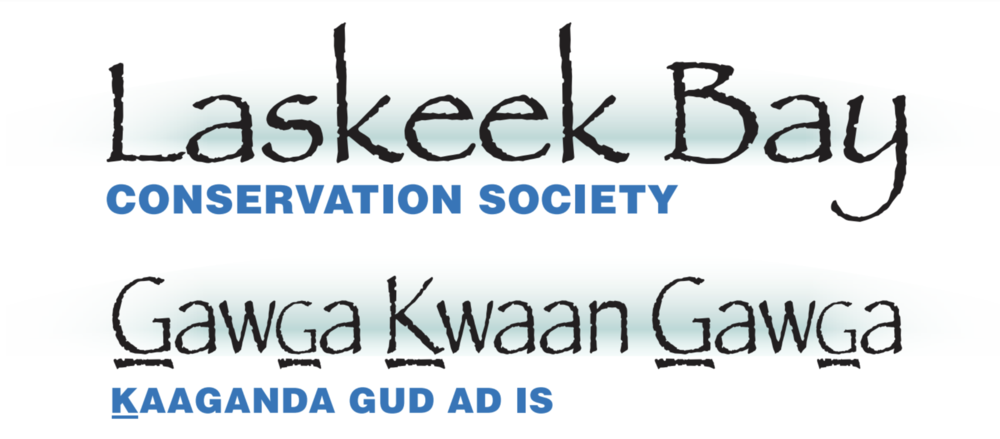There are now 4 Cassin’s chicks in the nestboxes on Limestone that we continue to weigh every 5 days. One recently fledged and another is not far behind. We set up a Reconyx infrared camera in front of box 25 with the hopes of catching the bird in action. We managed to get pictures of both the chick and the adult visiting at night. Before Cassin’s fledge they spend some time at night outside their nests exercising their wings. The chick in box 25 is still pretty young, but hopefully we will get photos of it venturing out of its nest box before fledging
The end of another great season in Laskeek Bay
Week 9 was a busy one as we completed the second round of oystercatcher surveys in Gwaii Haanas. This oystercatcher monitoring program is one of several monitoring programs associated with Gwaii Haanas’ SGinXaana Sdiihltl’lxa: Night Birds Returning project. The weather on this survey was surprisingly cooperative and we completed all 123 km of shoreline surveys and visited 101 known territories in a five day period. In this survey we found mainly chicks, although eggs were still present at some locations.
In our last week we finished oystercatcher surveys in Laskeek Bay. Although we found several large chicks we noted that, as in Gwaii Haanas, there appeared to be fewer than average chicks this season; perhaps related to the wet and windy weather that has prevailed this spring.
Murrelet monitoring comes to a close with start of the first Oystercatcher Survey
The crew departed Limestone Island on June 2nd to complete the first of two Black Oystercatcher surveys in Gwaii Haanas. This five day survey (on contract with Gwaii Haanas) is completed twice during the season and takes us down the eastern side of Lyell Island, past Hotsprings Island and as far as Alder Island to the south of Juan Perez Sound. We thoroughly scan the shorelines of many islands, islets and rocks for oystercatcher breeding territories, and closely examine both new and old territories looking for eggs and chicks. Of approximately 100 territories that we visited in Gwaii Haanas, many of the birds had eggs but only one newly hatched chick was found. We had very favourable weather during this survey until on the last day, when a southeasterly wind picked up and prevented us from visiting the last three territories on the survey route. Unable to make it back across Laskeek Bay we were fortunately able to take refuge at the Moresby Explorers float camp where we waited out the weather and then returned to Limestone Island the following day.
Busy times with camp in full swing!
As of May 31, we have counted and weighed 106 chicks in the four cabin funnels. This is compared to 96 chicks as of this date last year. There were two peak nights this year (May 17 and 22) both with 14 chicks. The chicks are still coming down the funnels and the season is not over yet!
In April, director Jan Oord and trapper Len Morgan came to Limestone to monitor for raccoons. They did not find any sign of raccoons on Limestone, although they did see many on adjacent Vertical Point. To continue monitoring for raccoons throughout the ANMU season we set up two infrared cameras on Limestone, baited with sardines and cat food. These cameras, along with those from RGIS, continue to capture photos of deer, ravens, and deer mice, but thankfully no raccoons.
After the major blow-down events in 2010/11, we were unable to set up our funnels in the colony in North Cove. Last year we spent two nights in North Cove conducting point counts and listening for Ancient Murrelets, but none were heard. This year, volunteer and LBCS director Keith Moore spent two nights again listening for ANMU, but this time he heard both chicks and adults. We were excited by the possibility of ANMU burrow success here despite the blow-down and set up 2 partial funnels in North Cove with the infrared cameras at the mouths. Surprisingly, we caught six chicks on camera between the nights of May 20th and May 27th.
Thanks to the Habitat Stewardship Program for Species at Risk for funding our raccoon monitoring program and enabling us to purchase these cameras.
